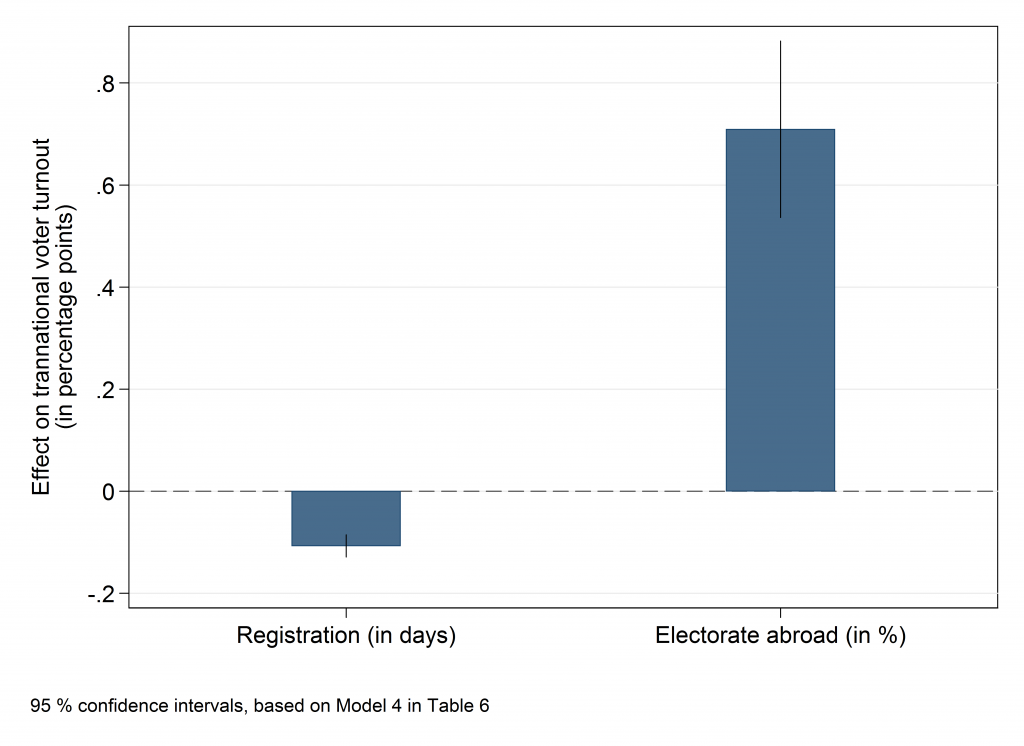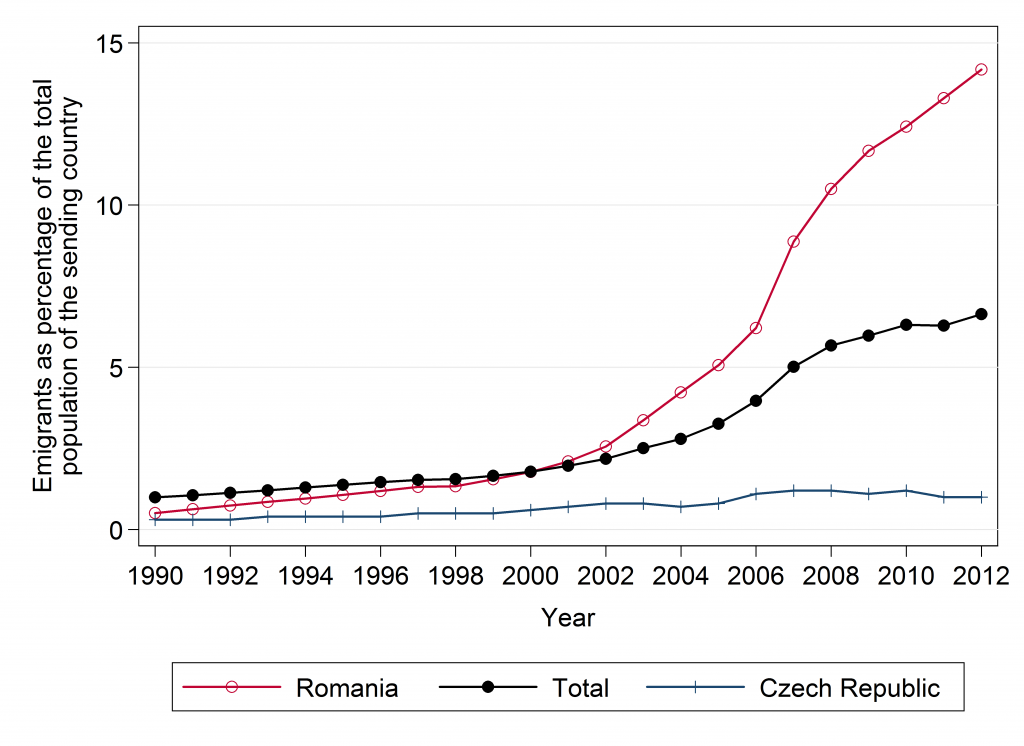Filip Kostelka, Université de Montréal & Sciences Po, Paris
What is the story?
Migration flows to, but also within, developed democracies have kept intensifying since the end of the Cold War. Consequently, relatively large segments of democratic electorates currently live abroad. This raises the question of emigrants’ engagement in their motherlands’ politics.
In a recent article published in the Journal of Ethnic and Migration Studies, I tackle the topic of transnational electoral participation that results from emigration. My objective is to show how transnational voting rates differ from the domestic rates (i.e. the voting rate in the sending country), what specific factors affect emigrants’ turnout, and, more generally, what implications emigration has for nationwide turnout in the sending countries.
Hypotheses
The literature on political behaviour mostly focuses on migrants’ electoral participation in the receiving country (i.e. the effect of immigration). In contrast, migrants’ participation in the elections of the sending country (i.e. the effect of emigration) has so far been, to a large extent, an uncharted territory. Drawing on the literature on domestic residential mobility (i.e. mobility within a single country), I expect that:
- Transnational voting rates are much lower than domestic ones as emigration increases the costs and reduces the benefits of the voting act.
With regards to the factors that affect transitional voting rates, I hypothesize that:
- The less burdensome the procedures for voting abroad, the higher the transnational voting rate.
- The larger the size of the diaspora, the higher the transnational voting rate (but the lower the overall voting rate).
This last hypothesis is motivated by the fact that large diasporas mean large pools of potential votes and a stronger motivation for political parties to go campaigning abroad and mobilize emigrants (see this news report covering a spectacular transnational campaign event held in 2007 for Romanians in Spain). At the same time, large diasporas mean a large number of voters for whom voting is costlier and less beneficial when compared to voters who stayed back home. I expect that transnational voting rates will never reach the level of domestic voting rates and, therefore, although a rise in the number of emigrants will lead to higher transnational voting rates, it will however also further reduce the overall (i.e. nationwide) voter turnout.
The empirical case: 10 post-communist democracies
To test my hypotheses, I study legislative elections in ten Central and East European democracies (CEE-10) between 1990s and 2012. As Figure 1 shows, the number of CEE-10 citizens living abroad strongly increased especially after 2000. Nevertheless, voter registration was automatic and for life in all ten countries (note that this has recently changed in Bulgaria, see p. 6 in this OSCE report). Therefore, emigrants kept the right to vote and were counted in the overall voter turnout rates as long as they maintained the citizenship.
Figure 1 The Evolution of the Number of Emigrants from the CEE-10
My empirical analyses corroborate Hypothesis 1. Transnational voting rates, measured as the number of votes case abroad divided by the number of emigrants, are much lower than domestic voter rates. After 2000, they never exceeded 32.1 % (Slovenia’s legislative election of 2008). This means that the growing emigration depresses the nationwide voting rates in the CEE-10. Actually, in those countries, nationwide voter turnout fell dramatically in the first two democratic decades (by 25.1 percentage points, see also this article). According to my estimates, emigration accounts for almost 10 % of this fall (2.1 pp).
Hypotheses 2 and 3 are also validated. In some of the CEE-10, citizens need to (re)register to vote from abroad. According to my models, which control for domestic turnout and other factors, each extra day that separate the registration deadline from the actual election, reduces transnational turnout by 0.1 percentage points. Conversely, diaspora size exerts the expected positive effect. Every increase in the number of voters abroad (as a percentage of the total electorate), boosts transnational voter turnout by 0.7 percentage points.
Figure 2 Factors Affecting Transnational Voting Rates (regression coefficients)

Implications
This study demonstrates that emigration is an increasingly salient factor for understanding voter turnout variation over time and across countries. Its findings are not of interest only to researchers who study electoral participation but also to policy-makers in the CEE-10 and elsewhere who are concerned by declining voting rates. Transnational electoral participation by emigrants specifically depends on legal provisions for external voting and diaspora size. The former factor is fully at the reach of legislators.
For more information, see:
Kostelka, Filip (2016). Distant souls: post-communist emigration and voter turnout. Journal of Ethnic and Migration Studies. doi:10.1080/1369183X.2016.1227696

